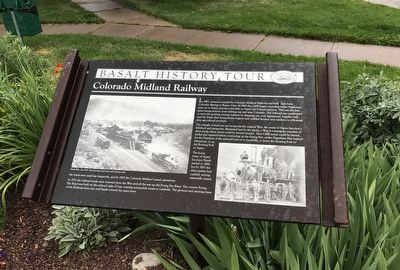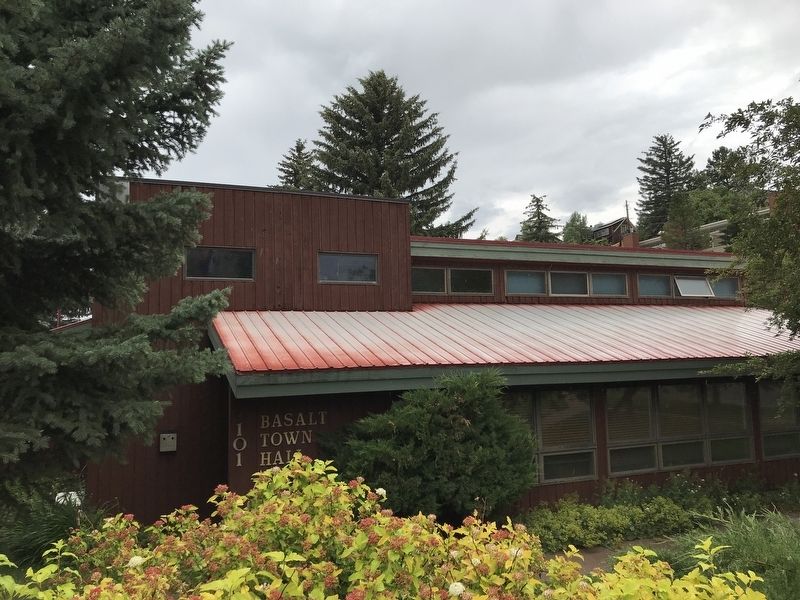Basalt in Eagle County, Colorado — The American Mountains (Southwest)
Colorado Midland Railway
Basalt History Tour
The triangle of land you are facing was the original Wye, the nexus of Aspen Junction's lifeblood and prosperity. Illustrated best by the photo, a Wye is a triangular junction of three tracks where trains could be turned around. Here CMR trains could be turned, fueled and repaired before continuing up the Frying Pan, under Hagerman Pass (named for the President of the railroad) and on to Leadville, or down the Roaring Fork to Glenwood, or up the Roaring Fork to Aspen.
The boom times of Aspen Junction/Basalt started in 1886, but by 1893 the silver market had crashed, mining essentially ceased, the trains were used less frequently, and by 1919 the Colorado Midland ceased operations.
In 1921 the railroad tracks were removed from the Wye and all the way up the Frying Pan River. The current Frying Pan Road was built on the railroad right of way, creating automobile access to Leadville. The glorious and exciting times of the Railroad were over and Basalt entered the quiet years.
Caption
Left: Basalt Wye, circa 1915. Note the depot and hotel, still standing today
Erected by Basalt Regional Heritage Society.
Topics. This historical marker is listed in this topic list: Railroads & Streetcars. A significant historical year for this entry is 1883.
Location. 39° 22.136′ N, 107° 2.058′ W. Marker is in Basalt, Colorado, in Eagle County. Marker is at the intersection of Midland Avenue and Midland Spur, on the right when traveling west on Midland Avenue. Touch for map. Marker is in this post office area: Basalt CO 81621, United States of America. Touch for directions.
Other nearby markers. At least 6 other markers are within 13 miles of this marker, measured as the crow flies. Welcome to the Basalt History Tour (a few steps from this marker); The Snell Building (within shouting distance of this marker); Colorado Midland Depot (within shouting distance of this marker); a different marker also named The Colorado Midland Depot (within shouting distance of this marker); The Splendid Spud (approx. 0.2 miles away); On the Way to Janeway (approx. 13 miles away).
Credits. This page was last revised on July 18, 2020. It was originally submitted on July 17, 2020, by Duane and Tracy Marsteller of Murfreesboro, Tennessee. This page has been viewed 347 times since then and 66 times this year. Photos: 1, 2. submitted on July 17, 2020, by Duane and Tracy Marsteller of Murfreesboro, Tennessee. • Andrew Ruppenstein was the editor who published this page.

